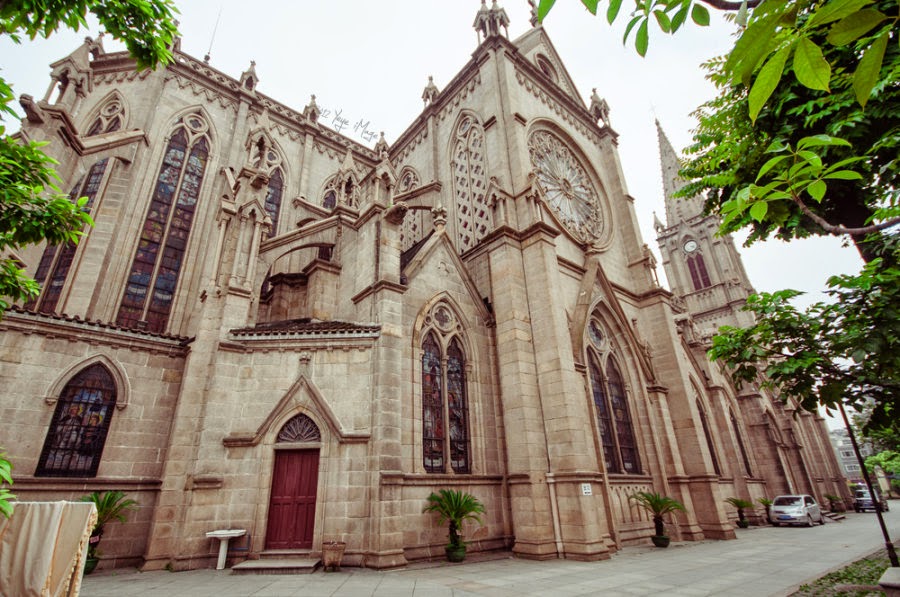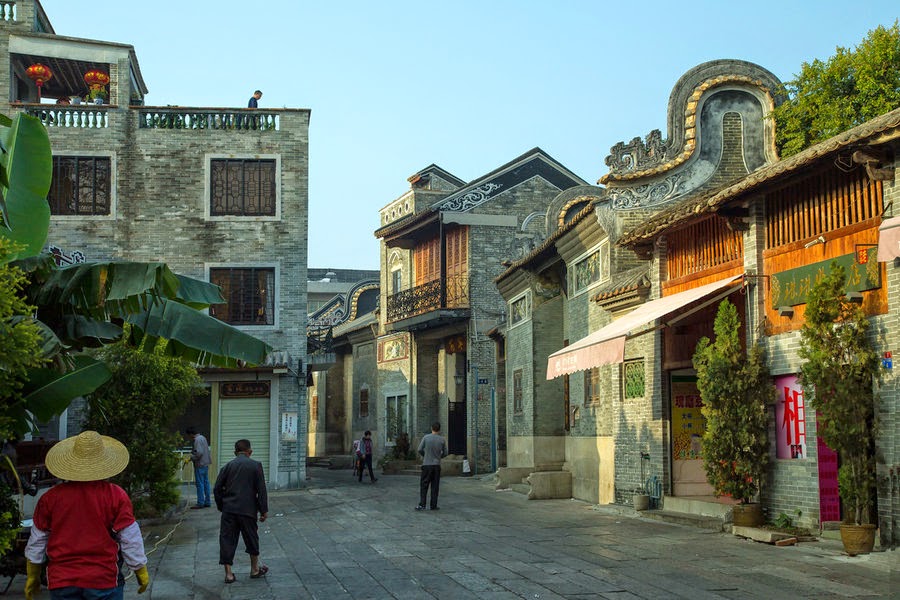The Cathedral of
the Sacred Heart of Jesus also known as Stone House by locals is a Roman
Catholic cathedral in Guangzhou Pearl River and
stands at the heart of the busy old town, it is regarded as the ‘Notre Dame of
East Asian’ and is a holy and peaceful site in the bustling urban area.
With a gross area
of 3,300 square yards (2,754 square meters), it is the biggest in Roman
Catholic Archdiocese of Guangzhou and one of the grandest double steeples
Gothic architectures in China. Featuring all of the walls and pillars made of
granite, the Sacred Heart Cathedral is nicknamed the ‘Stone House’ (Shishi in
Chinese) by the locals. It is the largest granite Catholic structure in Southeast Asia , and one of only four all-granite Gothic
churches in the world.
The original site
of Sacred Heart Cathedral was the residence of viceroy of Guangdong
and Guangxi Provinces Guangdong
Two initial
foundation stones were laid by Philippe and all senior members of Missions
étrangères de Paris. One in the east was engraved with ‘Jerusalem 1863’ , while the other in the west with ‘Roma 1863’ . The purpose of these two stones is
to relate that Christianity originated in eastern Jerusalem
and developed in western Rome
Featuring a plane
in a cross shape, the cathedral is 259 feet (79 meters) from south to north,
and 115 feet (35 meters) from west to east. With a height of 191 feet (58.5
meters), the building follows the classical Gothic architectural style.
Standing on the square in the front of the church, one can see the imposing
facade with symmetrical design and three vertical parts.
Three dark red
doors with exquisite Gothic pointed arches are set on the ground floor, with
the middle one being the largest. A huge rose window with a diameter of 23 feet
(6 meters) above the middle entrance is the focus of the facade. The crystal
colorful glasses of the window wear a golden gleam under the beautiful
sunshine. Higher on the third floor, there are two eight-square pointed bell
towers symmetrically on the east and west. Three sides of the west tower are
inlaid with big clocks; while the east tower keeps the Virgin Mary Bell Group
containing four heavy bronze bells brought from France
For more information,
please visit www.top-chinatour.com


















































